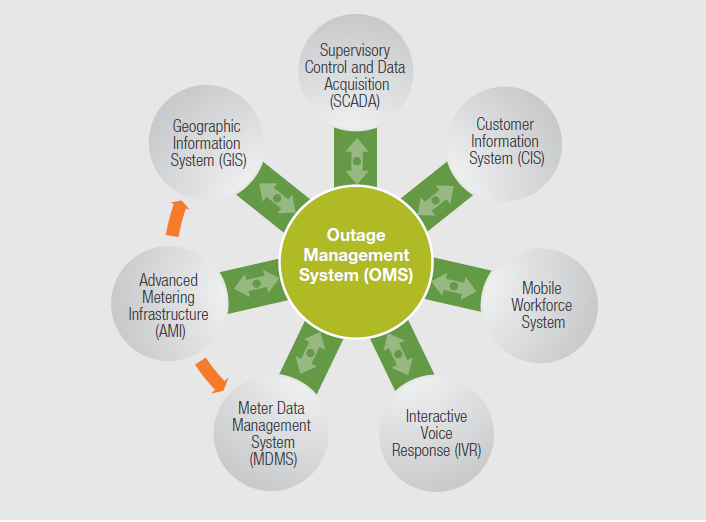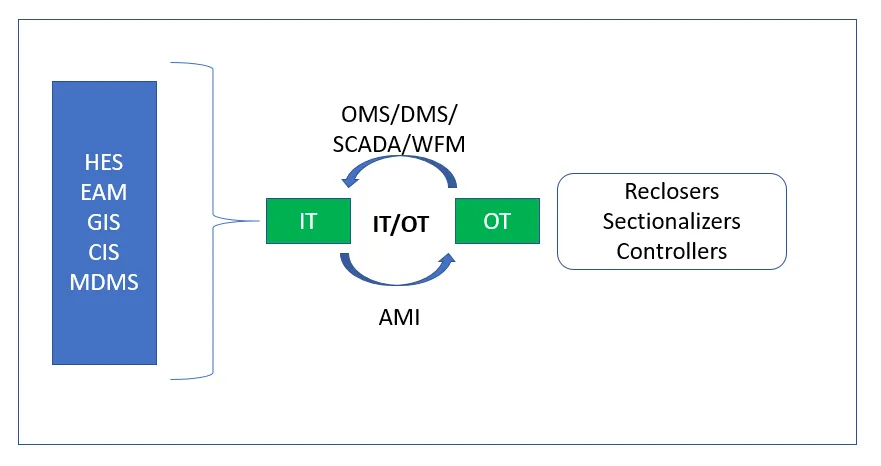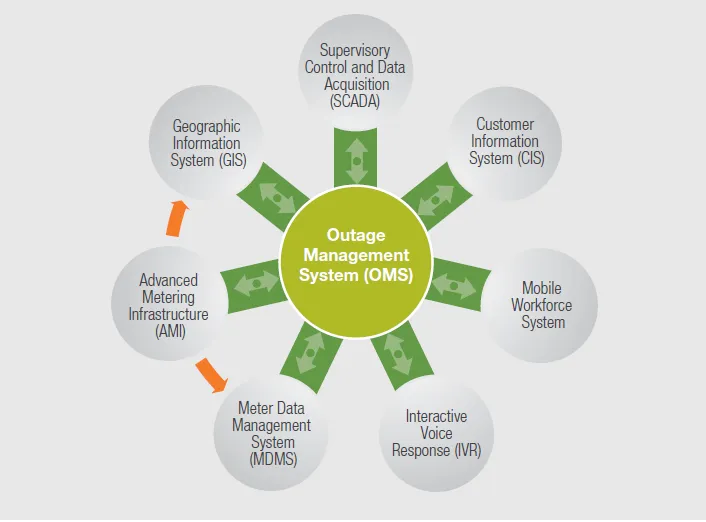Advanced Utilities Operations leveraging Advance Meter Infrastructure (AMI)
Blog: Capgemini CTO Blog
Today, the utilities industry is facing real cost challenges in replacing aging infrastructure, maintaining customer satisfaction, meeting a growing demand for power, improving reliability, and regulatory issues and environmental concerns. This has increased the importance and focus on cost effective and efficient utilization of physical assets. Traditional approaches to maintaining electrical grid infrastructure are based on “preventive” or, in some cases, “reactive” methods. Preventive maintenance approach involves a time-based, periodic maintenance program for all assets with a higher priority placed on critical, higher cost assets. For example, certain assets are inspected every five years, while others are inspected every year, and so on. Under a reactive maintenance approach, assets are inspected and repaired only after they fail. Neither approach fully mitigates the risk that critical assets will fail while in service, in some cases resulting in catastrophic consequences. Predictive planned maintenance helps utilities organizations to accurately predict events that cause outages and to run their assets at peak performance.
This involves the data integration and predictive analytics of the equipment nameplate operating ratings with actual equipment operating data to boost uptime, performance and productivity while lowering maintenance costs and the risk of revenue loss. AMI information for asset management include power quality and load profile data which provides detailed information on how electrical components are performing and which components are at risk. Leveraging predictive analytics using this and other information such as weather data help planning engineers identify over-utilized assets and respond quickly to prevent outages and improve asset life.
Predictive analytics can help the utilities improve the cost effectiveness of the planning and scheduling of their asset maintenance program through a risk-based approach rather than a time-based approach, prioritize field crew activities on the most critical maintenance components and improve the overall reliability of service.
This capability provides several potential benefits for the utilities, including:
- Reducing unplanned outages by predicting failures and replacing overloaded transformers before the onset of the peak-loading season.
- Informed and sound decision making to determine the load growth for any given transformer to decide whether to move a given customer from one transformer to another.
- Improving customer service and avoiding costly emergency/overtime work by replacing a large percentage of unplanned outage work effort with planned maintenance work activity.
- Accurately optimizing capacitor bank size and location based on actual Volt/VAR readings.
- Discovering suspect transformers proactively before they lead to customer voltage complaints.
- Better asset utilization by relocating transformers or rebalancing the customer load on under-utilized and overloaded transformers.
- Choosing the appropriate transformer size when replacing failed transformers.
- Troubleshooting voltage problems by knowing the voltage at each customer access point on the feeder.
- Scheduling maintenance and adjusting load based on accurate indications of conductor, sectionalizer and regulator overload rather than estimates and periodic scheduling.
Real-time Operations leveraging AMI technology
Outage Management Systems (OMS) are required to integrate, and link varied operational systems such as Advanced Metering Infrastructure (AMI), geographical information systems (GIS), customer information systems (CIS), IVR systems and mobile data systems to provide near real-time, dynamic data from the field. The AMI network extends to the ends of a utilities network at the customer premise. As a result, it can provide remote monitoring of the end nodes of the delivery points. This capability can be used not only to pinpoint outages but also to verify power restoration, enabling utilities to proactively identify customers whose power has yet to be restored. Outages reported by other systems such as SCADA (Supervisory Control and Data Acquisition) and DMS (Distribution Management System), or by the customer directly, can then be explored to verify the outage and determine the extent of the outage. Because AMI systems improve the processes for identifying the location of outages accurately, the effective dispatch of appropriate personnel and equipment can reduce labor and truck roll costs.

Integration of OT/IT solutions
As Operational Technology (OT) and Information Technology (IT) continue to converge and improve information sharing, utilities can expedite new business processes, applications, and data management to drive the transformation. The integration of complex event processing and analytics engines into the utilities’s enterprise architecture landscape that is comprised of IT systems like Customer Information System (CIS), Enterprise Asset Management (EAM), HeadEnd System(HES) and Meter Data Management System(MDMS) and OT systems like OMS, DMS, SCADA and WFM will enable effective outage management, asset management and workforce management.

Finally, looking forward, the AMI infrastructure will allow for many other future distribution operation management capabilities and improvements. The enablement of AMI and additional data elements allows the utilities to deploy additional real-time monitoring, control and management solutions. Distribution Management applications such as:
- Distribution – Automated feeder restoration
- Distribution Power Analysis – Real-time unbalanced load flow
- Volt/Var Optimization – Multi-objective optimization system
Over the last decade, utilities have invested in AMI technologies that provide data to support processes for meter-to-cash, conservation, theft detection, outage management and asset management. By leveraging AMI information and the AMI network to authenticate and prioritize potential and real outage events, the utilities can realize significant benefits and return on investment in reduced operating costs, capital costs and improved reliability.

Key Benefits of integrating AMI with OMS
Key benefits achieved by leveraging AMI include but are not limited to the following use cases:
- Improved device prediction accuracy by using meters to verify outages in a timely manner. Ideally, the OMS will identify and validate an outage before the first customer calls to report the outage. The IVR should notify the customer that the utilities are aware of the outage and responding. This leads to improved customer satisfaction.
- Improved crew management and utilization by reducing the crew effort required to return, repair and restore nested outages by pinging meters to validate power restoration of all customers affected.
- Improved outage detection and management process where outage can be verified even without customer intervention.
- AMI information and technology can improve customer outage call handling processes that result in reduced labor costs for CSRs. When OMS is made aware of an outage reported by smart meters, the IVR at the customer contact center should inform the customer that the utilities is already aware of the customer outage, provide an auto-ETR and in most cases the customer will hang up unless the customers wants to provide damage or causal information. This reduces the requirement for a CSR to answer customer calls that do not add value to the outage management process. Also, if the CSR could ping a meter to confirm power on at the utilities side of the meter base, they are more informed when dealing with customers who have been disconnected for payment arrears.
- Detection of outages at distribution transformers or other common points of failure can improve response times and reduce restoration costs. This is especially valuable in remote areas where the crew would normally have to spend a significant amount of time patrolling the grid to find the exact fault location.
- Improved accuracy of distribution network reliability statistics by detecting outages in a timely manner.
- Validation of liability claims. Detection and recording of outages allow utilities to know which claims attributed to outages correlate to an outage and which do not.
Connect with me on LinkedIn for more information.
